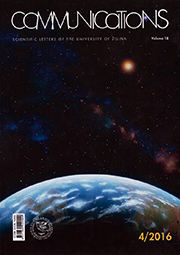Mathematical Modelling of Fibre Winding Process for Composite Frames
Mathematical Modelling of Fibre Winding Process for Composite Frames
Author(s): Michal Petru, Jaroslav Mlynek, Tomas Martinec, Jozef BrončekSubject(s): Methodology and research technology
Published by: Žilinská univerzita v Žilině
Keywords: mathematical modelling; composite frame; winding fibre processing; robot technology;
Summary/Abstract: This article describes the authors´ own mathematical modelling designed for the production process of a new type of low-weight composite frame. The used real technology is based on the winding of carbon or glass filament rovings around a polyurethane core which is a frame with a circular cross section (this type of composites is used, for example, to reinforce the doors and windows of airplanes). The core is attached to the end-effector of the robot (robot-end-effector) and successively passes through the fibre-processing head during the winding process. Quality production depends primarily on the correct winding of fibres around the polyurethane core. It is especially needed to ensure the correct angles of the fibre winding around the polyurethane core and the homogeneity of individual winding layers. The numerical model described in Euclidean space E3 of the manufacturing process is used when the fibre-processing frame is passing through the fibre-processing head. We use the described mathematical model and matrix calculus to enumerate the trajectory of the robot-end-effector to determine the desired passage of the core through the fibre-processing head. The calculated sequence of "tool-centre-point" values of the robot allows us to define the desired trajectory of the robot-end-effector and, thereby, the passage of the frame through the fibre-processing head. The calculation of the trajectory was programmed in the Delphi development environment. A practical example is analysed in the article.
Journal: Komunikácie - vedecké listy Žilinskej univerzity v Žiline
- Issue Year: 18/2016
- Issue No: 4
- Page Range: 103-111
- Page Count: 9
- Language: English

